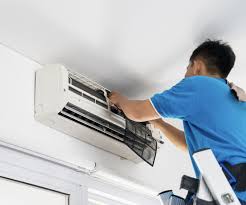Ever since the industrial revolution, workplace efficiency has been increasing in leaps and bounds. Today’s manufacturers operate on a scale that would have been inconceivable even one century in the past. All of those increases in speed and efficiency can create dangerous working conditions, though, so it’s important that workers prioritize their safety.
Whether they work in factories or warehouses, many modern workers will be tasked with working along with conveyor belts. These impressive devices help them work much faster but working with them safely requires taking a few precautions. Although employers should provide training when new workers take positions in their facilities, it’s worth staying up to date. Workers, themselves can read on to find out about 5 points to remember to stay safe when working with a conveyor belt for a refresher.
Only Operate Equipment if Conveyor Guards Are in Place
The conveyor guards are designed to reduce worker exposure to the inner workings of the conveyor belts, which contain gears, chains, and other potentially hazardous moving parts. There should be no possibility of bypassing or removing these guards and any openings should be small enough that they prevent entrance into obvious danger zones. If the guards are out of place, the equipment should not be considered in operational condition until they are fixed.
Avoid Loose Clothing and Jewelry
Anyone who is working with a conveyor belt should ensure that he or she has no dangling jewelry or clothing items that could be caught in the belt. Don’t wear baggy clothing to work and avoid ties. If a tie must be worn, make a point of either taking it off prior to beginning work with the conveyor or tucking it in.
Report Faulty Components
If the controls or any of the parts on a conveyor belt are not operating as intended it can wind up causing potentially serious injuries. All employees should be aware of the basic operations of their conveyor belts and should perform cursory checks to make sure everything appears to be in working order prior to starting their shifts.
Routinely checking components such as the mechanical clutch and the shafts to make sure that there is no evident damage does not take up much time and it can help to avoid injury. If any issues are apparent, they should be reported to a manager immediately.
Always Follow Lock-Out/Tag-Out Procedures
Conveyor belt systems are designed to feature lock out tag out procedures that prevent them from being started up during repairs or maintenance. This, in turn, is intended to prevent potential injury to operators, who should have received training in how to follow these important safety procedures prior to beginning their first shifts. All workers should make a point of following lock-out/tag-out procedures conscientiously to avoid injuries.
Use Equipment Only as Intended
Conveyor belts are designed to carry goods or parts throughout a facility. That is the only thing they’re designed to do. People and unapproved objects should never occupy the conveyor belts, as this can cause both damage to the equipment and potentially dangerous situations.
The Bottom Line
Although conveyor belts feature many pinch points and other potential dangers just as a result of the way that they are designed, there are plenty of precautions that workers can take to make sure that they remain safe. This list is not comprehensive but it does offer reminders of a few important factors influencing operator safety that should never be ignored or forgotten.
